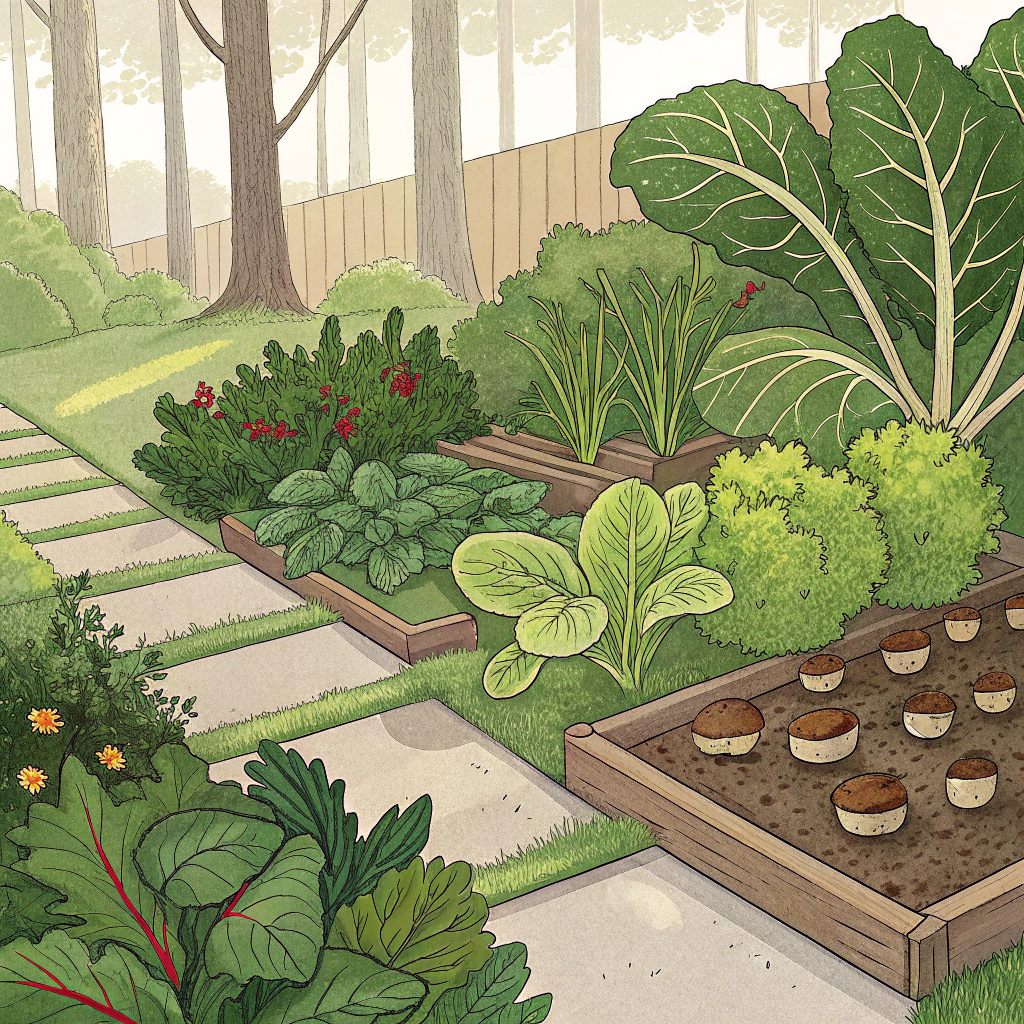Gardening is often associated with bright sunlight and open spaces, but what if you have a shady garden? Many gardeners face the challenge of growing vegetables in areas that receive limited sunlight. Fortunately, there are plenty of vegetables that thrive in the shade, allowing you to cultivate a productive garden even in less-than-ideal conditions. In this article, we will explore the best vegetables to grow in shade, providing you with valuable insights and tips to make the most of your gardening space.
Why This Topic Is Worth Reading

Understanding which vegetables can flourish in shaded areas is crucial for any gardener looking to maximize their yield. Many people assume that a lack of sunlight means a lack of growth, but that’s not necessarily true. By learning about shade-tolerant vegetables, you can expand your gardening options and enjoy fresh produce even in less sunny spots.
This knowledge is particularly valuable for urban gardeners, those with large trees in their yards, or anyone living in regions with shorter growing seasons. By focusing on shade-friendly vegetables, you can create a diverse and productive garden that thrives in various conditions.
In this article, you will discover a variety of vegetables that not only tolerate shade but also offer delicious flavors and nutritional benefits. Whether you have a small balcony or a spacious backyard, these tips will help you grow your own food successfully.
Key Highlights or Must-Know Points
- Many vegetables can thrive in partial to full shade.
- Shade-tolerant vegetables often have unique flavors and textures.
- Understanding light requirements can help you plan your garden layout.
- Growing in shade can reduce water evaporation and help with pest control.
The Best Vegetables to Grow in Shade
- Leafy Greens: Spinach, kale, and Swiss chard are excellent choices for shaded areas. These leafy greens can tolerate low light and often produce tender, flavorful leaves. They are also quick to grow, making them perfect for successive planting.
- Root Vegetables: Carrots, beets, and radishes can thrive in partial shade. While they may take a bit longer to mature, the cooler temperatures in shaded areas can enhance their sweetness and flavor.
- Brassicas: Vegetables like broccoli, cauliflower, and Brussels sprouts can grow well in shade. They prefer cooler temperatures, making them ideal for shaded gardens, especially in warmer climates.
- Herbs: Many herbs, such as parsley, cilantro, and mint, can grow in partial shade. These herbs not only add flavor to your dishes but also attract beneficial insects to your garden.
- Peas: Sugar snap peas and snow peas are great options for shaded areas. They can climb and utilize vertical space, making them perfect for small gardens.
Extra Tips, Notes, or Warnings
- Soil Quality: Ensure your soil is rich in organic matter. Shady areas can sometimes have poorer soil quality, so consider adding compost or well-rotted manure to improve fertility.
- Watering Needs: Shaded areas may retain moisture longer, so be cautious not to overwater. Monitor the soil moisture and adjust your watering schedule accordingly.
- Spacing: When planting in shade, be mindful of spacing. Crowded plants can lead to poor air circulation and increase the risk of disease.
- Sunlight Hours: Aim for at least 4-6 hours of indirect sunlight for optimal growth. If your garden is extremely shaded, consider using reflective surfaces to increase light exposure.
Common Questions Answered
1. Can I grow tomatoes in the shade? While tomatoes prefer full sun, some varieties can tolerate partial shade. However, they may produce fewer fruits and have a longer growing season.
2. How much shade is too much for vegetables? Most vegetables need at least 4-6 hours of sunlight per day. If your garden receives less than this, consider focusing on shade-tolerant varieties.
3. What can I do to improve growth in shady areas? You can improve growth by enhancing soil quality, ensuring proper watering, and using reflective surfaces to increase light exposure.
4. Are there any vegetables that should not be grown in shade? Vegetables like peppers, cucumbers, and squash typically require full sun and may not perform well in shaded conditions.
Final Thoughts
Growing vegetables in shade is not only possible but can also be rewarding. By selecting the right plants and understanding their needs, you can create a thriving garden that provides fresh produce throughout the growing season. Embracing the challenge of gardening in shade opens up new possibilities and allows you to enjoy the beauty and bounty of nature, even in less-than-ideal conditions.
Get Involved
We encourage you to try growing some of these shade-tolerant vegetables in your garden. Share your experiences, ask questions, or leave feedback in the comments below. For more wonderful content on gardening and other topics, be sure to check out Mind of Griff. Happy gardening!
Leave a Reply